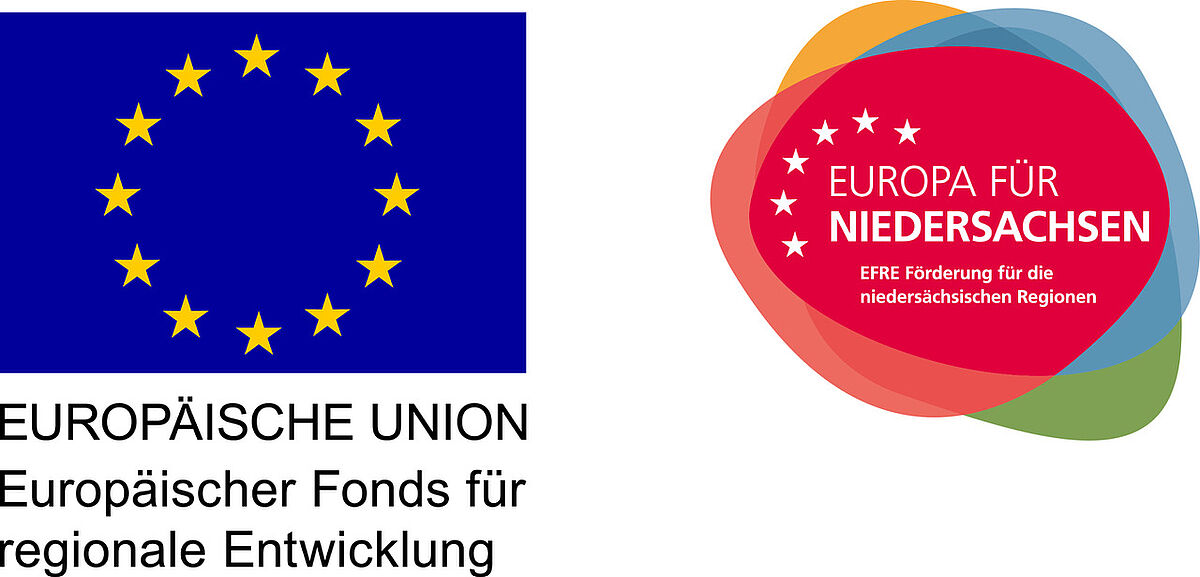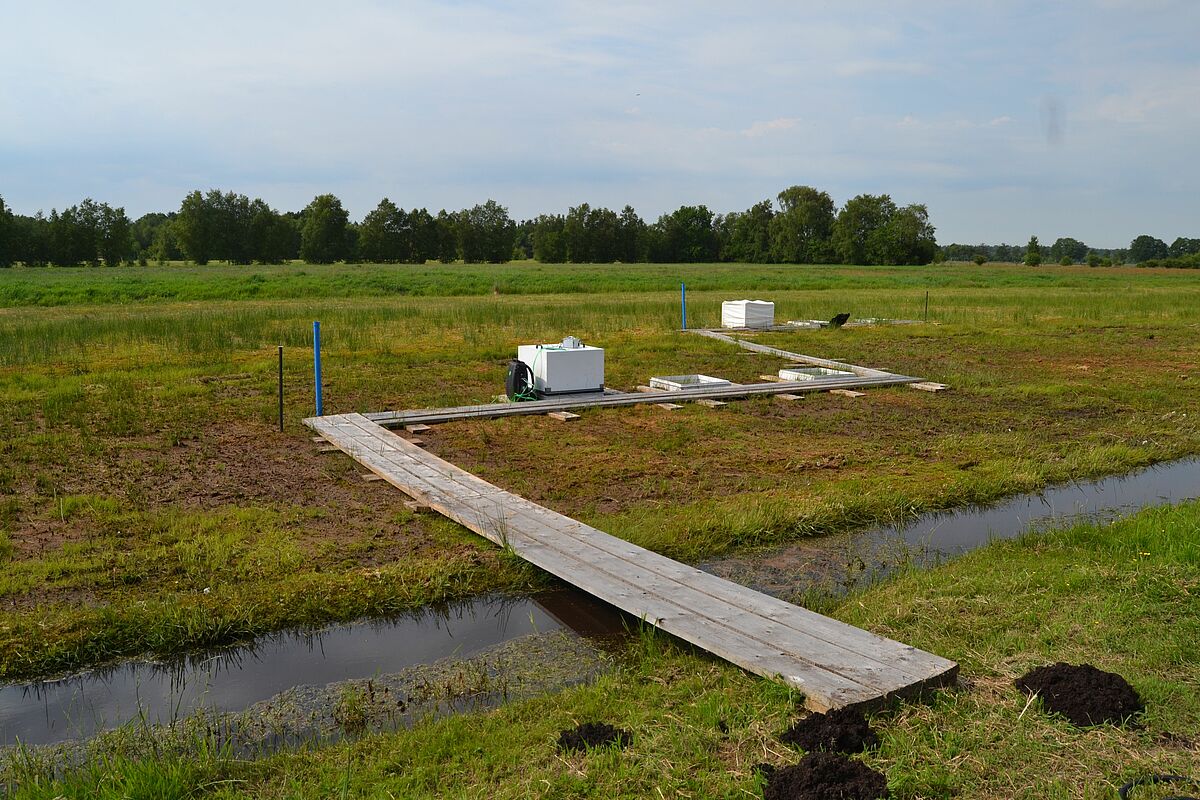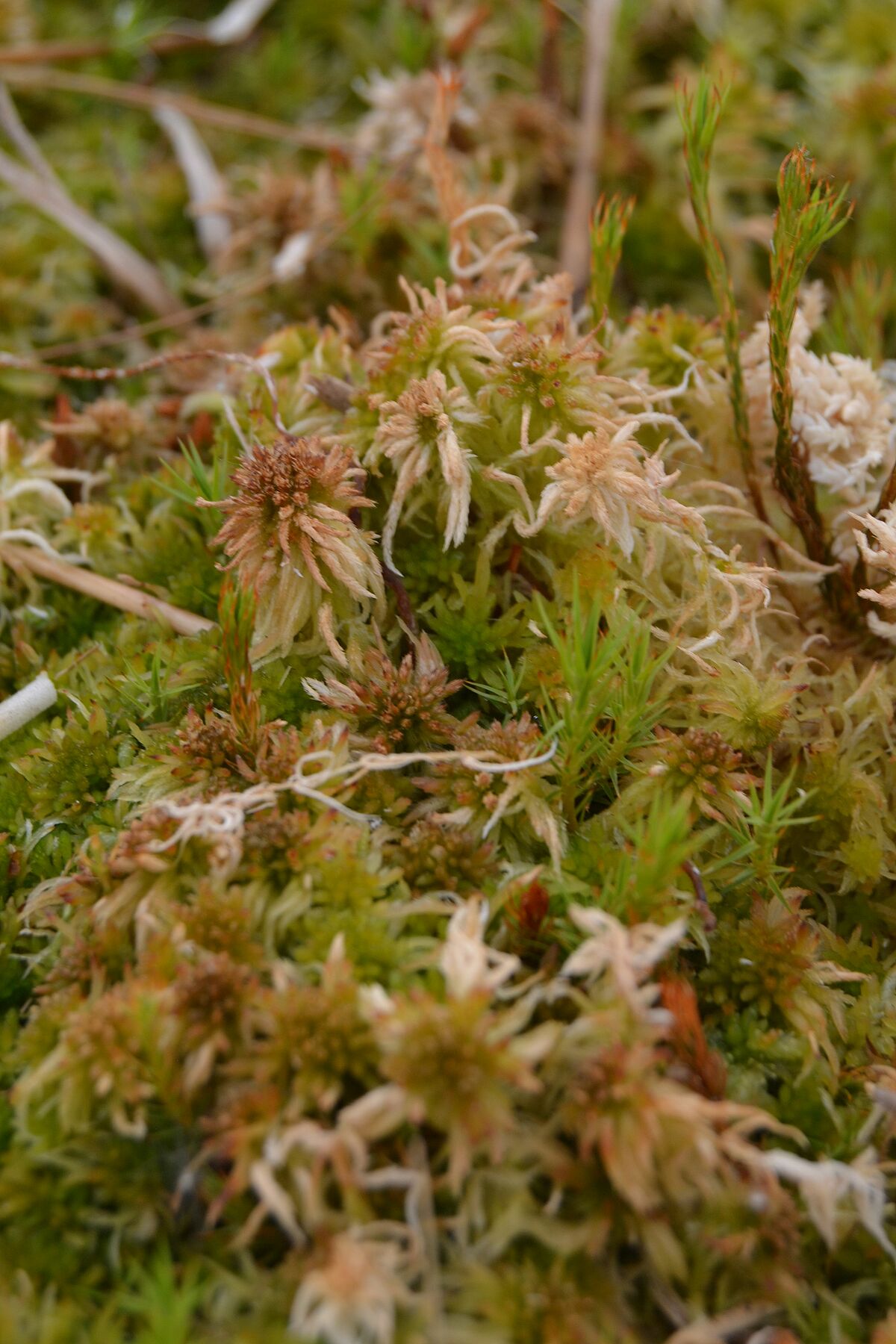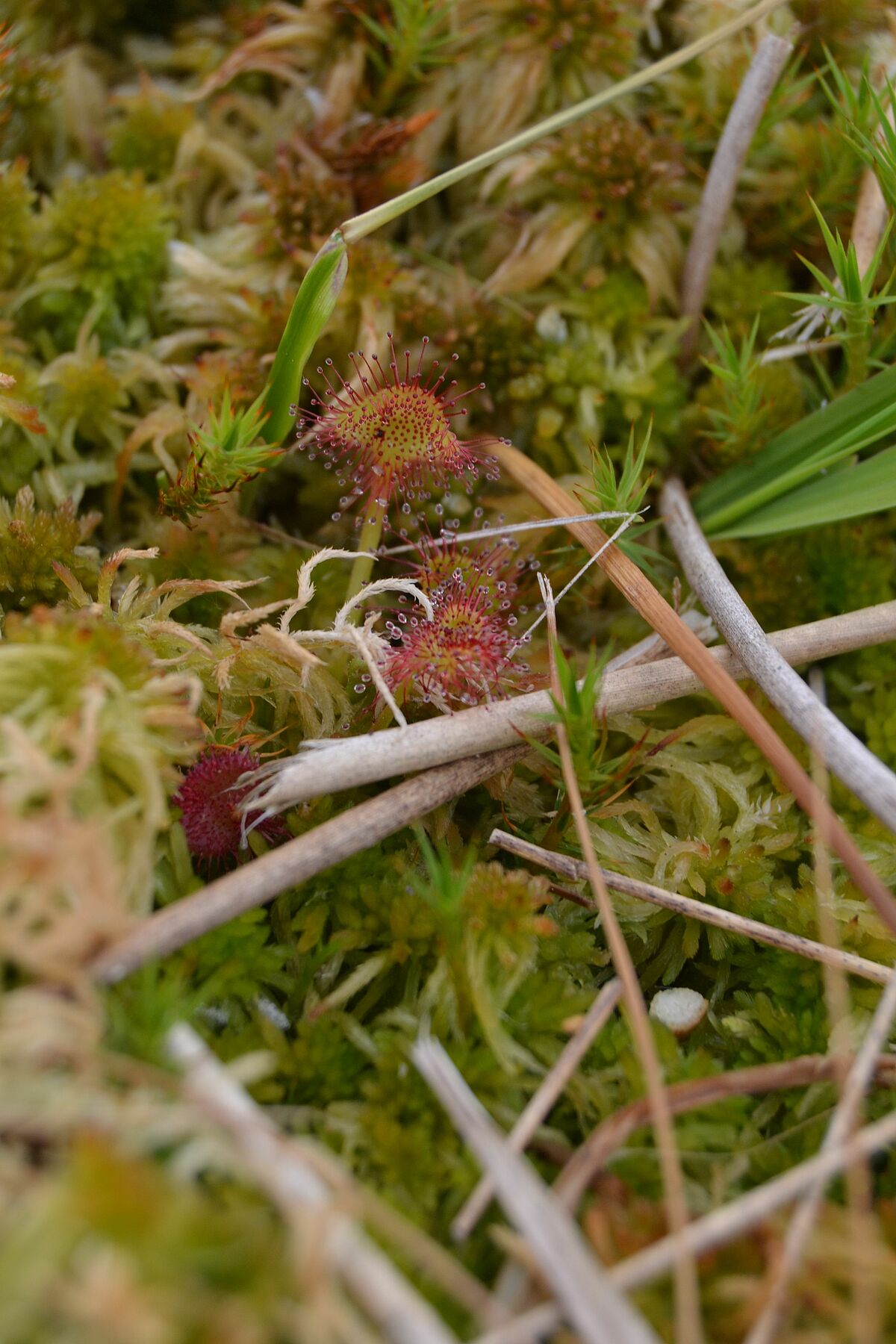OptiMOOS




Optimisation of Sphagnum cultivation with regard to water management, climate balance, biodiversity and product development.
Determination of the greenhouse gas fluxes in the filter basins as well as in the Sphagnum cultivation areas with different topsoil removal and irrigation system
Cycle: 01.11.2019 bis 31.12.2022
Sponsorship:
- Ministry of the Environment, Energy and Climate Protection, State of Lower Saxony
- European Regional Development Fund (ERDF)
Further Sponsors
Network Partner:
- University of Greifswald, Institute of Botany and Landscape ecology,
Department Peatland studies and Paleoecology, Partner in the Greifswald Mire Centrum - University of Rostock
- Carl-von-Ossietzky-University Oldenburg
- Research Institute for horticulture Hannover-Ahlem
Responsible: Caroline Daun, Dr. Gerald Jurasinski
Project description:
The OptiMOOS joint project is a continuation of the MOOSGRÜN and MOOSWEIT projects. During those projects, Sphagnum was cultivated on a field scale in paludiculture for the first time worldwide. The aim of the OptiMOOS project is to optimize the successfully established trial areas (14 ha). The greenhouse gas balances of the growing and harvesting areas of the Sphagnum and the dam are to be recorded to investigate the long-term effects. On the three different variants, CO2, CH4 and N2O measurement campaigns will be carried out at regular intervals using chamber hoods. By installing planted filter tanks and using the filtered water for irrigation of a Sphagnum cultivation area, the effect of the filtered/unfiltered water on GHG exchange can be recorded and analysed. In addition, Sphagnum cultivation areas with different topsoil removal and irrigation system will be created. The department of landscape ecology at the University of Rostock is thus responsible in the joint projectOptiMOOS for determining the greenhouse gas fluxes in the filter basins and in the Sphagnum cultivation areas with different topsoil removal and irrigation systems.
